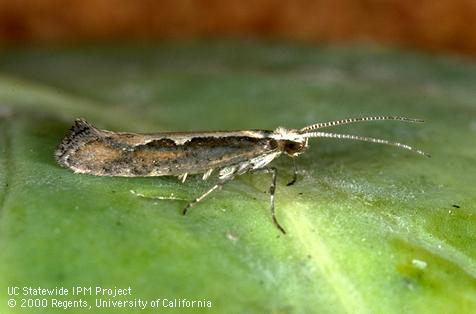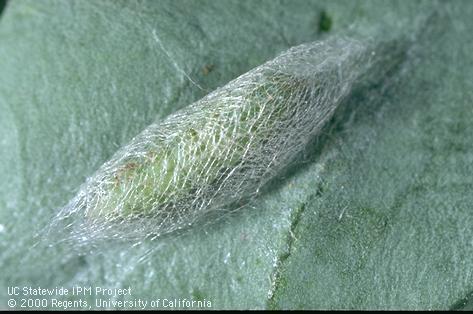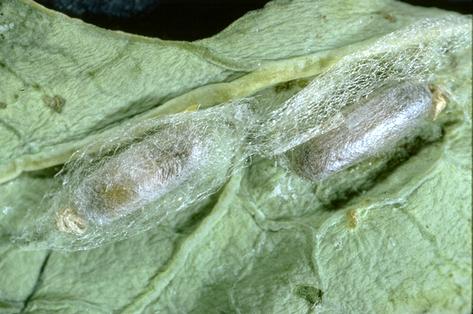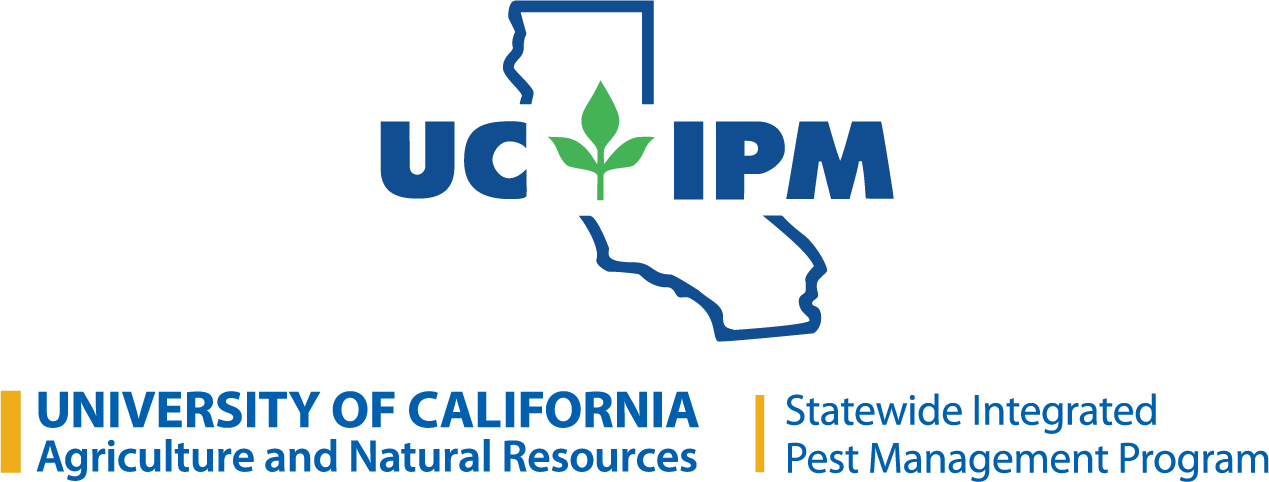Identification
Mature diamondback moths are small, green yellow caterpillars with black hairs and are only 0.33 inch long. The body is slender and pointed at both ends, with a distinctive V formed by two prolegs at the rear end.

Life Cycle
Adult diamondback moths lay their tiny eggs singly or, less commonly, in groups of two or three on the undersides of leaves. The eggs are minute, scalelike, green white to yellow, and very difficult to spot.
Larvae feed mostly on the undersides of outer or older leaves of older plants, chewing out small holes, or at the growing points of younger plants. They reach maturity in about 10 to 14 days, depending on temperature, and then spin loose white cocoons, which they attach to leaves or stems, and pupate within them.
Although they may occur all year round, diamondback moths are often abundant in spring and early summer and populations may rise again in fall. The pest has four to six generations a year.

Damage
Larvae may cause small holes in leaves, which is usually not serious, except when the wrapper or cap leaves of cabbage are injured. Growing points or crowns of young plants may be chewed, causing stunted growth. Some larvae may bore into heads of broccoli or cauliflower, causing contamination.

Solutions
Natural enemies often effectively control diamondback moth in California. In Southern California, the ichneumonid wasp, Diadegma insularis, has been identified as the most common parasite. It pupates within the cocoon of the parasitized caterpillar. You can recognize it by the broad stripe around the pupa. Trichogramma pretiosum may attack diamondback moth eggs.
Applications of Bacillus thuringiensis or spinosad are also very effective. Older plants are not usually seriously damaged. Destroy culls and mustard-type weeds several weeks before planting.

